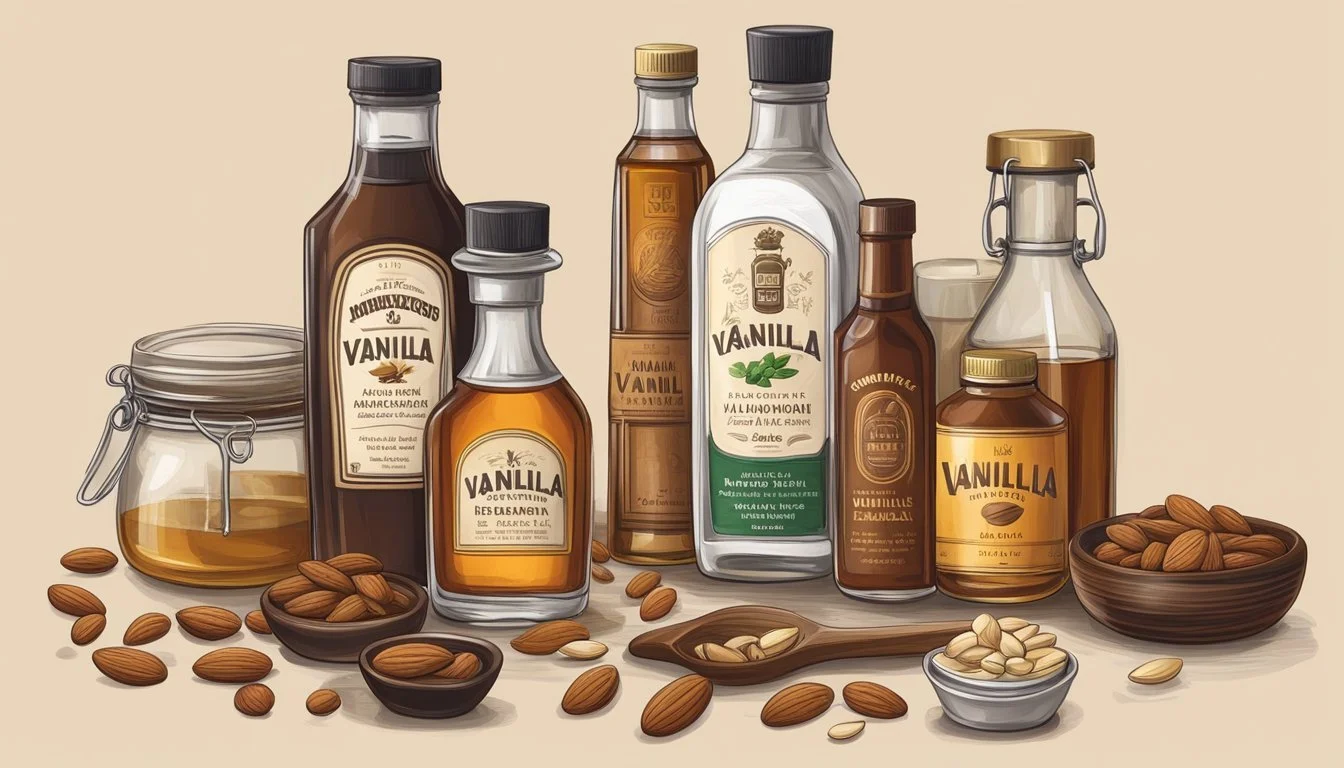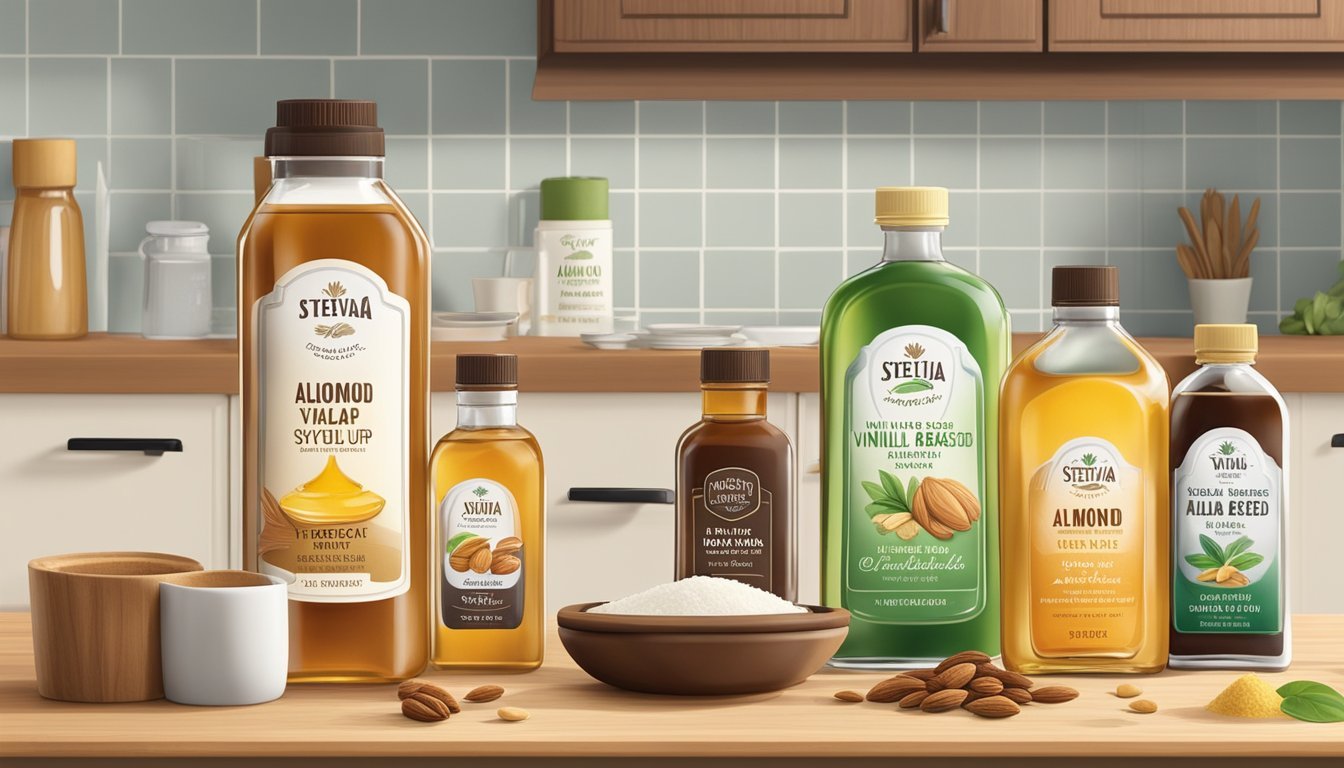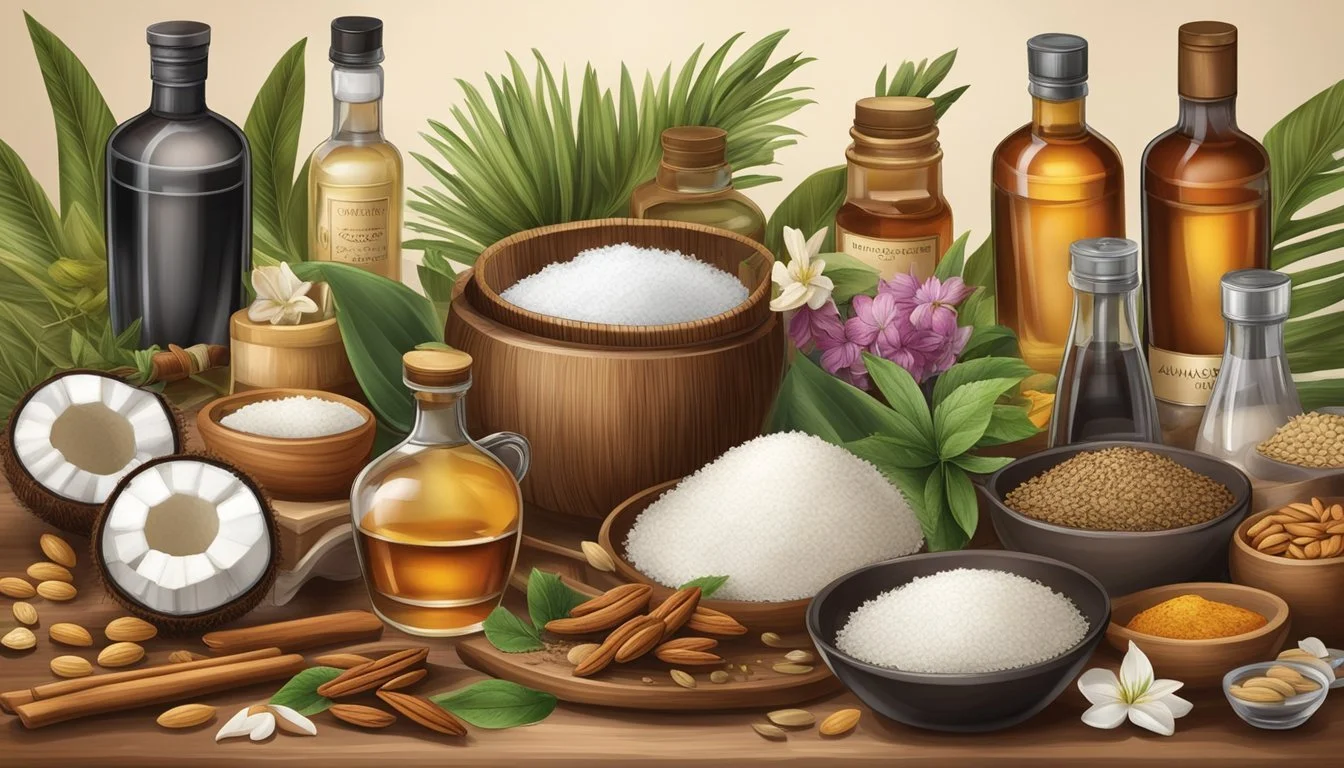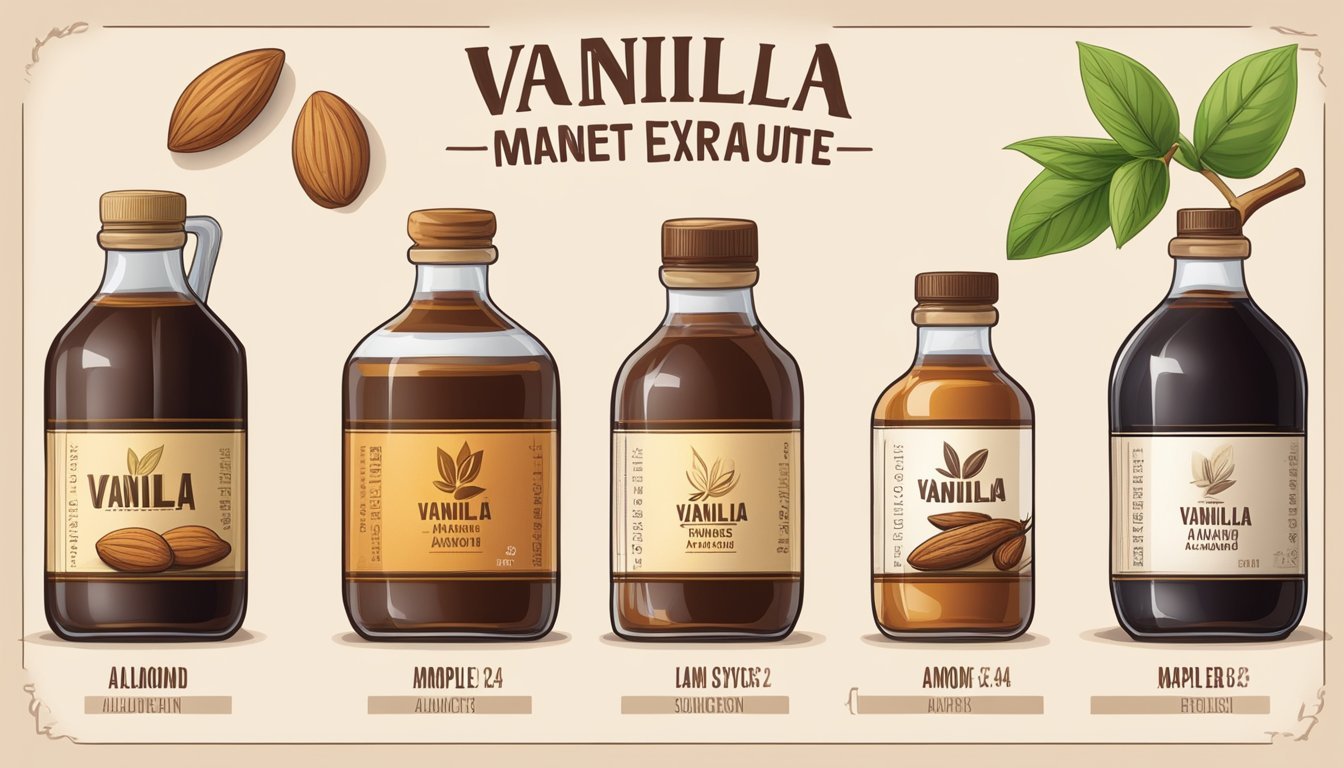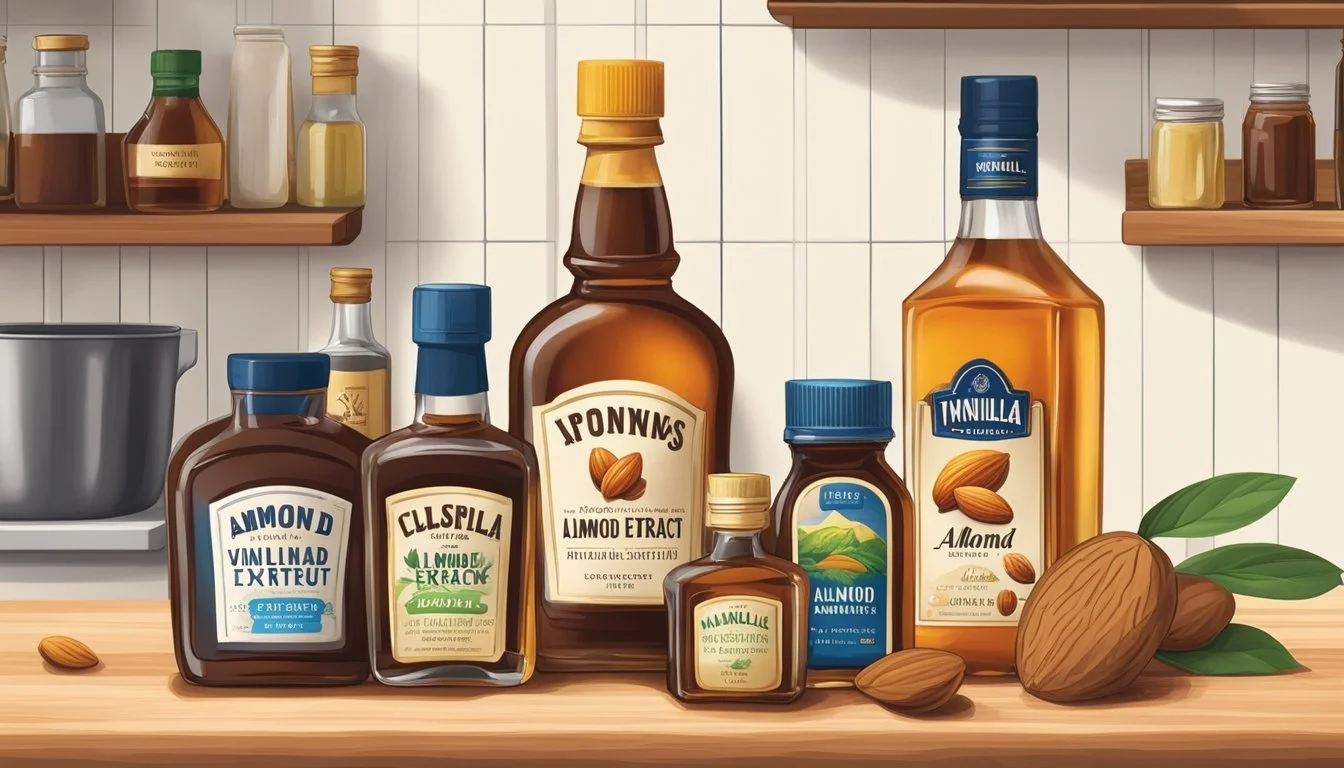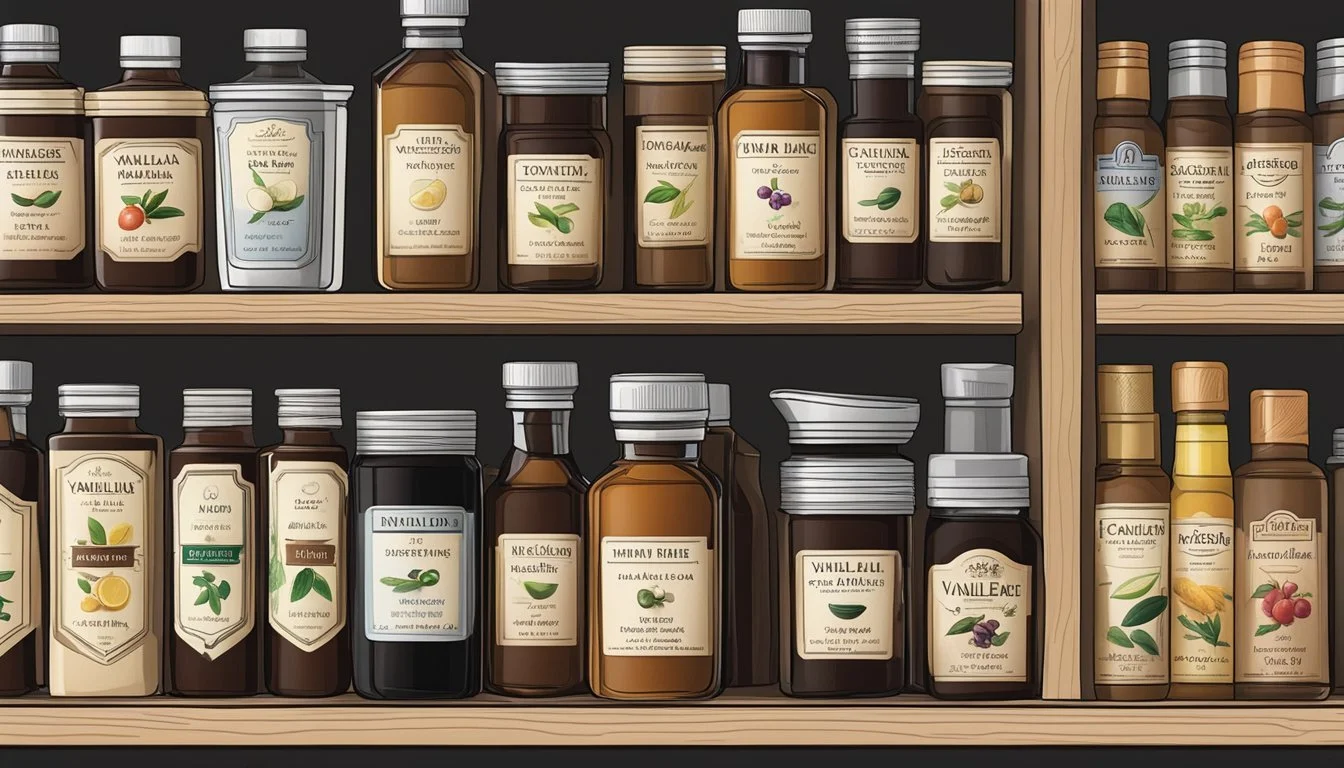Vanilla Extract Substitutes
Top Alternatives for Baking and Cooking
Vanilla extract is a staple ingredient found in nearly every baking enthusiast's pantry, prized for its rich flavor and aromatic sweetness that enhances a wide variety of desserts. Sometimes, however, bakers might find themselves without this essential ingredient, or they may seek an alternative for various reasons such as cost, availability, or dietary restrictions. Fortunately, there are several substitutes that can mimic the sweet, floral notes of vanilla extract without compromising the taste of the final product.
These substitutes include ingredients commonly found in the kitchen, such as maple syrup and bourbon, both of which can provide a complexity of flavor reminiscent of vanilla extract. Maple syrup offers a subtle sweetness and a hint of flavor that can complement the other ingredients in baked goods. On the other hand, bourbon, along with other liquors such as rum or brandy, can add depth with their own distinctive flavors. In situations where the appearance and tiny flecks of vanilla bean are desired, vanilla bean paste serves as an excellent alternative, providing the visual appeal and intense vanilla flavor that traditional extract offers.
Understanding Vanilla Extract
In the realm of baking and flavoring, vanilla extract stands out as a quintessential ingredient, known for its unique ability to enhance a broad array of dishes with its rich and complex flavor.
Defining Vanilla Extract
Vanilla extract is a solution made by macerating and percolating vanilla beans in a mixture of water and alcohol. Its primary function is to impart the vanilla flavor into various culinary preparations. By FDA standards, pure vanilla extract contains a minimum of 35% alcohol and 100 grams of vanilla beans per liter.
Primary Components of Pure Vanilla Extract
The two main elements of pure vanilla extract are:
Vanillin: The compound primarily responsible for the characteristic flavor and aroma of vanilla.
Alcohol: Serves as a solvent to extract the flavors from the vanilla beans and preserve the extract.
Additionally, pure vanilla extract may contain minor amounts of other aromatic compounds, which vary depending on the origin of the vanilla beans coming from specific species of orchids.
The Role of Vanilla Extract in Baking
Vanilla extract serves a critical role in baking, not only adding its own flavor but also enhancing the other ingredients in the recipe. It's used in:
Cakes
Cookies
Pastries
Custards
The complexity that vanilla extract adds can balance sweetness and add depth to the aroma and taste of baked goods. It's a versatile ingredient, complementary to a wide array of flavors in the culinary world.
Popular Vanilla Extract Substitutes
When a recipe calls for vanilla extract and it's not available, one can confidently use a variety of other ingredients as a substitute without compromising the flavor profile too much. Each substitute offers a distinct taste that can complement the dish in its own unique way.
Almond Extract
Almond extract is a potent flavor agent, much stronger than vanilla. It imparts a nutty flavor suitable for recipes where a hint of almond would be a welcome addition. A common ratio is to use half a teaspoon of almond extract for every full teaspoon of vanilla extract, given its stronger flavor profile.
Vanilla Bean Paste
Vanilla bean paste is an excellent direct substitute for vanilla extract, as it contains the seeds from the vanilla pod, giving it a rich and authentic vanilla flavor. One would use an equal amount of vanilla bean paste as the vanilla extract called for in the recipe, typically a 1:1 ratio.
Maple Syrup
Maple syrup can replace vanilla extract by providing a warm, complex sweetness. Replace vanilla extract with an equal amount of maple syrup; one tablespoon of syrup per tablespoon of extract. This substitution is perfect for baked goods, bringing a slight maple undertone to the dish.
Bourbon and Other Spirits
Substituting bourbon, rum, or whiskey for vanilla extract adds a deep, warm flavor and is particularly suitable for desserts. These spirits can be used 1:1 in place of vanilla extract. Besides bourbon, brandy or a vanilla liqueur also serve as an attractive alcohol-based alternative, each bringing their own unique sweetness and essence.
Sugar-Based Substitutes
When seeking to replicate the sweet, aromatic profile of vanilla extract in recipes, sugar-based alternatives may serve as an effective substitute. These substitutes often involve the infusion of vanilla flavor into sugar or milk, providing a sweet and nuanced taste similar to that of traditional vanilla extract.
Vanilla Sugar
Vanilla sugar is made by infusing granulated sugar with vanilla. This is typically accomplished by storing sugar with vanilla pods over a period, allowing the sugar to absorb the vanilla's essence. To make homemade vanilla sugar, one can simply add vanilla pods to a jar of sugar and let it sit for a couple of weeks. If time is short, it's feasible to blend sugar with pure vanilla extract for a quicker solution. The ratio most commonly suggested for substitution is using vanilla sugar in equal measure to vanilla extract.
How to Use: Substitute vanilla sugar for regular granulated sugar at a 1:1 ratio when the recipe calls for vanilla extract.
Vanilla-Flavored Milk
Vanilla-flavored milk can be created by warming milk gently with vanilla beans or by adding vanilla extract to milk. This infuses the milk with a subtle vanilla flavor that can act as a vanilla extract substitute in various recipes.
How to Make: For every cup of milk, use one vanilla bean or 1 teaspoon of vanilla extract. Heat the milk with the vanilla bean or stir in the extract, then allow it to cool before using.
How to Use: Replace vanilla extract with the same quantity of vanilla-flavored milk, especially in recipes where milk is already an ingredient, like baked goods or custards.
Non-Alcoholic Alternatives
When seeking alternatives to vanilla extract without alcohol, cooks can turn to a variety of non-alcoholic options that maintain the vanilla flavor profile in recipes. These include using certain liquids like milk or water infused with vanilla, and products such as imitation vanilla which offer a similar taste without the presence of alcohol.
Milk or Water
For recipes requiring a subtle hint of vanilla, milk or water infused with vanilla essence is a simple substitute. It's suitable for anyone avoiding alcohol while still providing that desired vanilla flavor. Plant-based milks, such as almond or soy milk, can also be utilized as alcohol-free alternatives. The substitution ratio is typically:
Milk or Water: 1 tablespoon per 1 tablespoon of vanilla extract
When using water with vanilla infusion, it is especially useful for recipes where milk's creaminess might not be desired.
Imitation Vanilla
Imitation vanilla is a synthetic version of vanilla, often created from wood by-products, which replicates the flavor of real vanilla without using alcohol. It's a cost-effective alternative and widely available in stores. While it does not have the exact same depth of flavor as pure extract, it can suffice in recipes where vanilla is not the central flavor. The recommended ratio is:
Imitation Vanilla: 1 tablespoon per 1 tablespoon of vanilla extract
Imitation vanilla provides a suitable replica of vanilla flavor for baked goods and other desserts where the subtleties of pure vanilla extract are less crucial.
Homemade Vanilla Extract Substitutes
Creating homemade vanilla extract substitutes involves the usage of either a homemade extract process or employing whole vanilla beans direct in recipes. These methods provide alternatives to store-bought extract, tailoring the vanilla flavor to personal taste preferences and availability of ingredients.
Homemade Vanilla Extract
One can prepare homemade vanilla extract by steeping whole vanilla beans in a choice of alcohol such as vodka, rum, or brandy. The alcohol acts as a solvent, extracting the flavors from the vanilla beans over time. A general guideline is to use around three to five vanilla beans per cup of alcohol, splitting the beans to expose their seeds before submerging. The mixture should be stored in a cool, dark place, and it typically takes at least 8 weeks for the flavor to fully develop.
Procedure in Brief:
Split three to five vanilla beans lengthwise to expose the seeds.
Place the beans in a jar and cover with one cup of alcohol (vodka, rum, or brandy).
Seal the jar and store it in a cool, dark place for a minimum of 8 weeks.
Shake the jar occasionally to help disperse the vanilla seeds.
Using Whole Vanilla Beans
Utilizing whole vanilla beans is a potent substitute for vanilla extract in a variety of culinary applications, especially when a more pronounced vanilla flavor is desired.
To use whole vanilla beans effectively:
Cut the vanilla bean lengthwise and scrape out the seeds.
Use the seeds directly in the recipe, which typically call for the distinctive specks and intense flavor of the bean.
The quantity of seeds needed for substitution will vary based on the size of the bean and the desired flavor intensity, but a typical rule is that the seeds of one vanilla bean equate to approximately one teaspoon of vanilla extract.
Using whole vanilla beans not only imparts a robust flavor but also contributes an aesthetic quality to dishes with the visible flecks of vanilla.
Exotic and Specialty Alternatives
In crafting unique culinary profiles, cooks often seek out exotic and specialty alternatives to vanilla extract that can provide a distinctive twist to traditional recipes.
Chocolate and Spices
Chocolate: Rich and luxurious, chocolate can sometimes stand in for vanilla extract to impart depth and complexity to desserts. A square of melted unsweetened chocolate or a tablespoon of cocoa powder can replace a teaspoon of vanilla in recipes where its bold flavor complements the dish.
Spices: A dash of spices can work wonders in replacing vanilla extract.
Cinnamon: For a warm, aromatic touch, cinnamon is an excellent choice. One can use it in a one-to-one ratio for a teaspoon of vanilla extract.
Nutmeg: A quarter teaspoon of freshly grated nutmeg brings an earthy sweetness that can substitute for vanilla extract in recipes where its flavor will not overpower.
Citrus Zest and Fruit Zest
Citrus Zest: Citrus zest offers a fresh, tangy burst of flavor, making it a good exotic alternative. The zest of one lemon, lime, or orange can replace a teaspoon of vanilla extract, particularly in recipes that benefit from a citrus accent.
Fruit Zest: Other fruit zests, such as that from grapefruits or tangerines, can also be utilized. They bring a unique fragrance and taste that is especially suitable for baked goods and sweet sauces.
Coffee and Tea Infusions
Coffee: A robust substitute for vanilla extract is coffee. It can be used in three main forms in recipes:
Espresso Powder: Intense and concentrated, a teaspoon of espresso powder can replace vanilla extract in chocolate desserts to enhance their flavor.
Instant Coffee: To avoid altering the liquid balance in a recipe, instant coffee granules can serve as a substitute in a similar quantity to vanilla extract.
Coffee Infusion: A strong coffee infusion made from freshly brewed coffee adds a subtle, robust twist to sweets and is best used sparingly.
In summary, exotic flavors such as chocolate, citrus zest, and coffee can add an intriguing dimension to dishes that traditionally depend on vanilla extract. These alternatives cater to creative experimentation and can enrich a recipe's profile with their distinctive tastes and aromas.
Dietary Considerations
When considering substitutes for vanilla extract based on dietary needs, it is essential to account for both plant-based and sugar-free alternatives. Each of these substitutes caters to specific dietary restrictions and health considerations, from vegan lifestyles to sugar intake concerns.
Plant-Based Milk Options
For those seeking a vegan or plant-based substitute for vanilla extract, plant-based milks infused with vanilla offer an excellent solution. These milks are derived from sources like almonds, soy, oats, or rice. They come pre-infused with vanilla flavor, providing a subtle hint of the desired taste profile, suitable for sweet and savory recipes alike. When using them as a substitute, one should match the quantity required by the recipe — typically, a tablespoon of plant-based vanilla milk replaces a tablespoon of vanilla extract.
Almond milk: Vanilla-flavored almond milk can add a nutty undertone.
Soy milk: A versatile option that imparts minimal flavor change besides vanilla.
Oat milk: Known for its creaminess, further enhancing the texture of dishes.
Rice milk: A lighter alternative, suitable for those with nut and soy allergies.
Sugar-Free Alternatives
Individuals monitoring their sugar intake can opt for sugar-free alternatives. Extracts such as almond extract or even small amounts of liquor like rum, brandy, or bourbon are commonly used in place of vanilla extract to achieve a similar depth of flavor without adding any sugar.
Almond extract: A potent extract, so one should start with half the amount when substituting.
For alcohol-based substitutes, it is recommended to use them sparingly, as they are more potent and can overwhelm the dish if not measured properly. It's noteworthy that the alcohol typically evaporates during cooking or baking, leaving behind the essence and aroma without the alcohol content.
Bourbon: A sweeter, full-bodied substitute.
Rum: Adds a slightly sweet and warm note.
Brandy: Delivers a rich and fruity accent.
Impact on Taste and Texture
When substituting vanilla extract in baking and other culinary applications, the chosen alternative can significantly influence both the flavor profile and the texture of the finished dish. Here are some commonly used substitutes and their impacts:
Flavored Extracts: Almond extract, often used in a one-for-one ratio, can impart a nutty, somewhat sweet flavor that differs from the creamy profile of vanilla. Its intensity may alter the overall taste balance in desserts.
Vanilla Powder: This substitute offers a concentrated vanilla flavor without the addition of liquid, which can help maintain the texture of drier baked goods.
Flavored Milk: Vanilla-flavored milk can not only replace the flavor lost by omitting vanilla extract but also contribute to the moisture content, potentially affecting the crumb and chewiness of baked items.
Maple Syrup: This alternative introduces a complex, earthy sweetness and a hint of smokiness. While maple syrup can offer a scent similar to vanilla essence, its liquid form may affect the moisture balance in recipes.
The impact of these substitutes on texture is also noteworthy. For instance:
Liquid Substitutes: They may require recipe adjustments to prevent a batter or dough from becoming too wet.
Dry Substitutes: Dry options like vanilla powder need no such adjustments but could alter the flavor intensity.
Each substitute carries its unique properties, and bakers should consider both the desired taste and texture outcome when choosing a replacement for vanilla extract.
Assessing Quality and Cost
When contemplating substitutes for pure vanilla extract, consumers should weigh the quality and cost implications. The market offers a myriad of vanilla products, but their attributes and price points vary markedly.
Comparing Extract Quality
The quality of vanilla substitutes hinges on the concentration of vanilla bean extractives they contain. Pure vanilla extract is derived from soaking vanilla beans in alcohol, extracting full-bodied flavor. Its substitutes, such as vanilla paste or vanilla bean pods, closely mimic this quality, with the paste containing the scrapped seeds offering intense flavor akin to the extract. While other alternatives, like honey, may impart additional flavor notes, they lack the same concentration of vanilla bean extractives, potentially altering the end result in recipes.
Availability and Price Considerations
Substitutes for vanilla extract differ not only in quality but in their availability and cost at the consumer level. Below is an illustrative table outlining the general cost-effectiveness and availability of these substitutes in a standard grocery store:
Substitute Availability Cost Relative to Pure Vanilla Extract Vanilla Paste Widely available Often higher than extract Vanilla Bean Pods Moderately available Typically higher than extract Honey Widely available Lower than extract
Vanilla products such as vanilla sugar might be less expensive and more readily available, but they may not provide the same depth of flavor as extract. Consumers should consider both the availability of these alternatives in their local grocery store and the relative cost when deciding on a substitute for pure vanilla extract.
Application in Recipes
When substituting vanilla extract in recipes, one should consider how the alternatives will affect both the flavor and texture of the final product. Accurate measurement and consideration of the substitute’s qualities are crucial.
Adjusting Recipes for Substitutes
For successful recipe adjustments when substituting vanilla extract, it is crucial to measure correctly.
Vanilla Bean Paste: This is a thicker, more concentrated form of vanilla, and a 1:1 ratio substitute for vanilla extract can be used. It's ideal for applications where the presence of vanilla specs is desirable, like in vanilla ice cream or custards.
Maple Syrup: As a liquid, its sweetness and caramel notes can complement pancakes and bundt cakes, but it should be introduced in smaller quantities due to its less concentrated flavor and additional sweetness.
Vanilla Flavored Milk: Suitable for custards and beverage applications, one can use equal parts to replace vanilla extract, but it may alter the liquid content of the recipe.
Vanilla Syrup: Often sweeter, it should be applied in applications like pecan pie or cherry pie with a careful balance to prevent oversweetening.
Substitutes in Desserts and Beverages
Substitutes impact the taste and aromatic qualities in desserts and beverages.
Cakes and Cookies: In chocolate cake or cookies, vanilla syrup or flavored milk can enhance moisture while providing the vanilla flavor.
Brownies and Bars: Maple syrup can give a complimentary caramelized edge to brownies.
Vanilla Buttercream: Vanilla bean paste renders a visually appealing result with its vanilla flecks without altering consistency.
Alcohol-based Flavors: For recipes requiring an alcohol base found in vanilla extract, consider other flavored extracts with an alcohol content like almond or rum extract.
Spices: In some cases, a pinch of spices such as cinnamon or nutmeg in pancakes can compensate for the absence of vanilla extract.
Storing Vanilla Substitutes
When storing vanilla substitutes, it's essential to maintain their quality and extend their shelf life. Proper storage methods ensure that the substitute retains its fragrance and flavor, which are crucial in replicating the essence of vanilla extract.
Homemade Vanilla Sugar
Shelf Life: Homemade vanilla sugar can last up to 2 years.
Storage: Keep it in an airtight container, away from heat and moisture, to preserve its fragrance and prevent clumping.
Vanilla-flavored Syrup
Shelf Life: Approximately 3-6 months, depending on the sugar content.
Storage: Refrigeration is recommended for vanilla syrup. Store in a sealed bottle to retain the vanilla bean flavor.
Vanilla-flavored Milk
Shelf Life: Similar to regular milk, usually a week past the 'sell by' date.
Storage: Store in the refrigerator and keep tightly capped to maintain its fresh taste.
Bourbon or Brandy (as Extract Substitutes)
Shelf Life: Indefinite, alcohol acts as a preservative.
Storage: Keep in a cool, dark place. The deep, warm notes of these spirits are best preserved away from light.
Beans and Pods
Shelf Life: Whole vanilla beans can last several years if stored properly.
Storage: Store them in an airtight container, preferably a glass jar. They should be kept away from direct sunlight and heat to preserve their potent fragrance.
By adhering to these storage guidelines, one can ensure the longevity and efficacy of vanilla substitutes in a variety of culinary applications.

